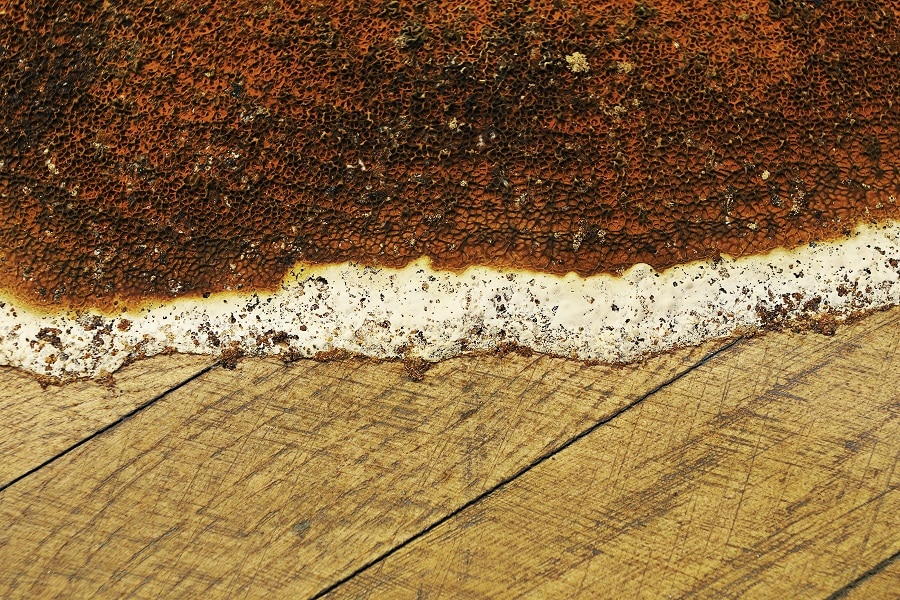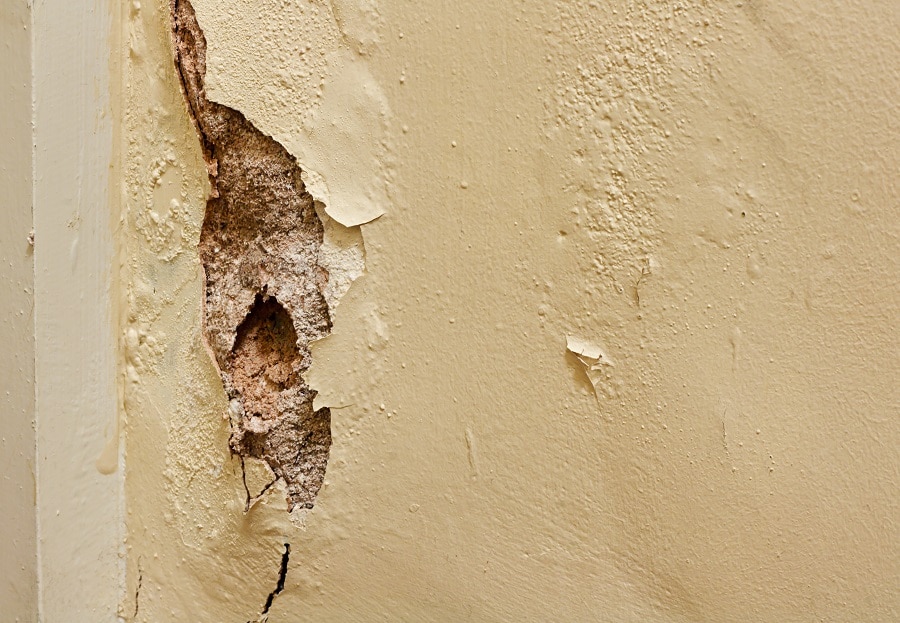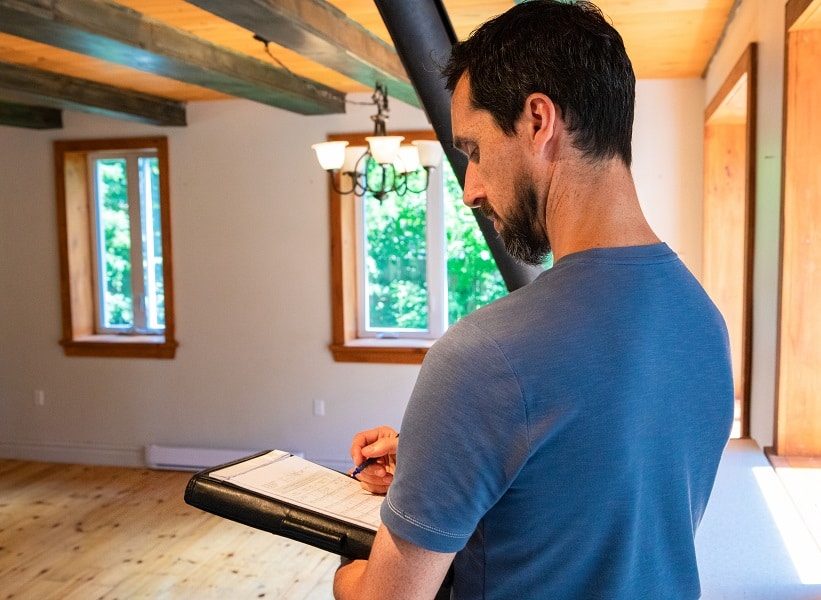What is dry rot?
Dry rot is a common term for various kinds of wood-decay fungus. Wood is cracked by Sporocarp (fungi), as Mycelium absorbs wood, dry rot results in fine dust spores, decomposition of wood and dry rot. Dry rot is a type of fungi that starts the rot process before penetrating the surface of timbers. A lot of these spores are present in soil and old wood already infected by dry rot.
This means wood can get damp and stay damp for considerable periods of time below 15% relative humidity. Dry Rot does far greater damage than Wet Rot, you can be surprised to learn that dry rot fungus will invade structural wood in your property while remaining undetected. It often happens where you don’t look. It could be under the plaster, under your floorboard, or in your loft. This is why it’s essential to know the signs and symptoms of dry rot and to get it treated quickly.
Our Guarantee
- upto 30 year guarantee
- customer focused team
- 20 years combined experience
- portfolio of satified customers
- attention to detail
- Construction line accreditation
- public liability insurance
- CHAS accreditation
What is the difference between dry rot and wet rot?
Dry rot and wet rot have different spores/species, meaning that they look different. The biggest difference, however, is that wet rot needs significant moisture to spread. One of the main differences between wet rot and dry rot is that wet rot spreads much faster. This is because it uses the capillaries within timber rather than mycelium that typically forms the basis of a Dry Rot infestation. Dry rot fungus can be “silent”, but it is very active and spreads incredibly quickly once it has taken hold in a property. Wet rot can occur on drier timber, but it generally spreads further when it becomes wet.
Call Our Sussex Damp Experts team now for quote, consultation and advice:
Call on 01273 257 765.
What are the causes of dry rot?
A number of fungi cause dry rot. Serpula Lacrymans is the most common one in Worthing. If it is not managed soon enough, it will spread across your home and brick and stone, and even plaster. Structural issues with the timber will seriously compromise your houses structural integrity. Dry rot attacks when you have an unhealthy amount of moisture in your timber. This makes it possible for nutrients to be extracted from the moisture by the fungus. The term “dry rot” is used to distinguish between “dry wood rot” and “wet wood.”
Wet wood feeds on dry rot. Those spores are dry, and those hyphae only need 20% dampness to grow into fungi while fungal spores require above 30% wet to generate hyphae. These hyphae can grow into a fungal body called a mycelium, which can also spread to find more timber in stone and brick. The fungi will remove hemicellulose, cellulose, and H2O, leaving behind a weak structure of the original wood. You will need a specialist survey to distinguish whether your decaying timber is being caused by dry rot or by a different fungus. This is important as the remedies for these damages can vary based on the actual cause.

The dangers of dry rot in Worthing
Dry Rot Effect on your Property
Dry rot can be highly detrimental to the integrity of your home. Dry Rot will slowly and silently break down the structural timber of your property. In extreme circumstances, this can cause different sections of your home to fall apart. It won’t attack the mortar between your bricks or stones, but it can travel through it. Hence, regular checks are essential.
Dry Rot is a severe issue, which needs immediate maintenance and treatment. When fungus is evident, you need to call a restoration expert right away to prevent mold growth from worsening any damage that may be apparent. If you think you might have a problem with dry rot, get a survey from Sussex Damp Experts today.
Dry Rot Effect on Your personal health
The fungus that causes dry rot does not cause harm. Dry rot is a fungus that can be harmful to your health if you allow it to occur. The pollution could cause illness and even death for children, old people and people with conditions like asthma.
What are the Warning Signs of Dry Rot?
The earlier you discover dry rot, the less time and money you’ll need to spend treating it and initiating remedial works. If any of these signs and symptoms are present, a formal evaluation is recommended.
-
The beginning of the dry rot cycle
Spores of dry rot are transported by the wind. If they are taken to the wood, they may begin to feast on it. They create hyphae on and inside of timber, as long as the wood provides sufficient nutrients for their growth. Spider web-looking collections called mycelium will join up as the hyphae grow and feed. Mycelium is white or grey The mycelium that compose these mushrooms are very powerful and can leach into porous areas like mortar, bricks and plaster to try and reach more timber.
-
Your timber is damaged.
You are likely to start noticing rot issues if your timber begins to dry out. This will sometimes even cause your timber to crumble. You will probably note the dry rot blacken the color of your wood. Scientists have discovered that dry rot can lead to something called cuboidal cracking. Cuboidal cracking is when timber breaks up into cubes that are around 50 mm in width. This damaged timber will also often have hyphae, the white fungal growth. Hyphae is a slime-mold and is an early symptom of dry rot.
-
Your timber will smell.
Dry rot attacks the timber, leaving it with a distinct fungal and musty odour. This can occur even if you can’t see a dry rot outbreak. Despite the odor, dry rot may not yet begun to grow.
-
Your timber will have fungus bodies on it.
It is the last and most visible level of dry rot. Fruiting bodies like Mushroom can start to attach themselves to your wood. If it becomes dry, dry rot can no longer feed on the wood so it will pop out spores instead.
-
Your timber will have spore dust.
Spores related to dry rot do not only exist in wood damaged by dry rot. Yet, if splotches of rusty coloured dust accompany dry rot spores, it can be indicative of dry rot. In the last step of the dry rot stage, fruiting bodies yield spore dust.
Dry Rot Treatment in Worthing

A dry rot attack would not happen until the moisture level is over 20 percent. The first safeguard to remove the presence of fungi is the monitoring of your living room or property’s moisture levels. Then the moisture levels will be under your control. Consult a professional for a proper treatment of your dry rot.
For the removal of infected timber and any remedial work, you can rely on Sussex Damp Experts . Infected timber removal is the work of a professional. The required treatment lies on the knowledge of a dam proofing expert. Either injected into the timber, or cover the timber surface can timber be treated. Options for preventive treatment are many. If inhaled or injected accidentally, these chemicals may cause negative side effects because they require a specific attention.
A specialist can also insert Boron rods into your timber. Boron is a hazardous mineral, so it is important to wear protective clothing whilst damp proofing your basement. Due to their specialist experience and thorough inspection, our damp experts will be able to identify and address any damage that dry rot may have caused in your home. If left untreated, dry rot can lead to the structural failure of a wooden structure. Dry rots are a serious problem and can lead to serious issues if left untreated. Our team at Sussex Damp Experts will implement a suitable treatment that addresses your problem efficiently and cost-effectively. Please don’t be late Call 01273 257 765 for today’s free survey and successful care if you suspect you have a problem with dry rot.
How can you prevent dry rot damage in Worthing?
The first step in treatment is to avoid dry rot. A dry rot infestation will occur in any wooden areas of the house that traps ample water and is subject to moisture/moisture ingress. Here are some of the behaviors that would prohibit them from forming: Confirm that your house doesn’t have any leaks. Facilitate sufficient ventilation.
Correctly ventilate the attic and insulate it. Properly freshen crawlspaces. Waterproof the exterior of your home by sealing the basement and crawlspace floors with our durable, waterproof sealers. Check all flashing to make sure there are no leaks and water directed properly. Keep the sinks and downs clear. If a “wet” system is used, search for the filling/heating leaks. Because of the moist conditions required for dry rot fungus to feed and germinates, the best way to reduce the risk of dry rot is to minimize moisture levels. If you have a leak, plugging the leak can help reduce further damage to the house.
Speak to a Dry Rot specialist in Worthing
Our professional damp proofers and dry rot specialists are experts in the field and we provide both expert advice and effective solutions. We will provide a free written estimate prior to beginning any work so that you know exactly what to expect. Over the years, we supported the damp concerns of thousands of home Worthing owners and could even benefit you. For a free survey and quote, call us on 01273 257 765. A qualified Plasterboard dry rot expert will diagnose your home to determine what the extent of the infestation is This allows us to give impartial recommendations and advice on the type of treatment you will need.

We have a complete list of expert surveyors who carry out all types of surveys and assessments, from pre-purchase surveys to full structural repairs. Dry rot gets worse over time by its nature, it is important to contact us immediately if you think you have a problem. The South Damp Proofing services will assist you in solving your dry rot dilemma by e-mail or calling the phone 01273 257 765.
FAQ
Should dry rot be restored or replaced?
A certain level of dry rot can be repaired, but whether the damaged areas provide the house with structural stability, such as beams and joints, or even flooring, it is not recommended. Replace the wood in such a situation instead of repairing it. Whether you restore or rebuild the wood, it is better if you avoided the conditions that caused the rot to flourish in the first place or risked it coming back. Your roof leaks, broken gutters, or downspouts, plumbing leaks or insufficient ventilation should be inspected when considering a roof moisture accumulation You may consult a specialist to find and repair the problem.
Will you be able to treat my Dry Rot problem effectively?
With our expertly trained surveyors and specialists, a dry rot problem can be treated, rectified, and your timber can be protected for the future.
How do I discover how far Dry Rot has spread?
If you have traced the dry rot fungus quickly or not, a professional will identify the source of the problem. They will be able to trace the fungus in the different masonry and plaster from which it has spread.
How much can dry rot widen?
Dry rot spores can spread in anyplace with the right environmental settings. The reason is that they are carried in the atmosphere. If your timber has a moisture content of around 20%, and if it is in the open air, these conditions are attractive to dry rot fungus. This suggests that fungus groups can disperse to multiple materials. If dry rot is spreading across masonry and plaster, and if it reaches more timber to feed off where the timber is moist. It can widen further. Dry rot fungus needs five things to survive: the right temperature, drive rot spores, moisture, oxygen, and the food source. In any home in Brighton most of this is present.
Will dry rot stretch?
What should I do to control dry rot?
First identify the reason for your timber moist before solving it. A different treatment shall be given if the reason for your timber moisture is outside.
What are the effects of living dry rot unchecked?
Dry rot is the most insidious form of moisture that can infest property and cause permanent damage to the building if left untreated. Sometimes, once the harm is already done due to the places in which the problem is likely to be the presence of dry rot does not come to light.
Is dry rot stringent?
Dry rot can be particularly common in wooden properties, so it is essential that early signs of dry rot are identified before the damage becomes too severe.
How am I meant to know if I have dry rot?
A timber survey will assess how your timber is affected by being exposed to moisture. Later on, fruiting bodies and mycelium will be noticeable in the drive rot life-cycle.
Where can dry rot grow?
Dry rot attacks and rots timber that’s been in contact with water for a long period of time. Although it can often be mistaken for other problems in its early stages, it is important to seek advice. In every structure, both old and new, dry rot can grow. The reason being that it is caused by moisture and wetness that happen anyplace. Dry rot can be caused by leaks or weather, meaning the type of property does not affect it.




